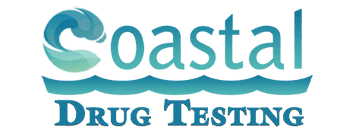 Our local DOT drug and alcohol testing centers are located in Doucette TX and the surrounding areas providing DOT drug testing, DOT alcohol testing and DOT physicals for all DOT modes regulated by Part 40. Same day service is available at our Doucette TX DOT drug testing facilities and most of our DOT drug testing locations are within minutes of your home or office.
Our local DOT drug and alcohol testing centers are located in Doucette TX and the surrounding areas providing DOT drug testing, DOT alcohol testing and DOT physicals for all DOT modes regulated by Part 40. Same day service is available at our Doucette TX DOT drug testing facilities and most of our DOT drug testing locations are within minutes of your home or office.
What type of DOT Testing is required?
Coastal Drug Testing provides DOT pre-employment, random, post-accident, reasonable suspicion and return to duty testing at our Doucette TX DOT drug testing centers.
If you hold a CDL license, a large, medium or a small trucking company, Coastal Drug Testing has a complete DOT compliance package which includes all the requirements to comply with CFR 49 part 40.
All Coastal Drug Testing DOT drug testing centers utilize SAMHSA Certified laboratories and a licensed Medical Review Officer as required by DOT part 40 regulations.
The U.S Department of Transportation (DOT) requires that all DOT regulated "safety sensitive" employees have a negative DOT pre-employment drug test result on file and be actively enrolled in a DOT approved random drug and alcohol random testing pool (consortium).
In addition, if a DOT regulated company has more than one "safety sensitive" employee, the employer must also have a written DOT drug and alcohol policy along with an on-site supervisor that must have completed a reasonable suspicion supervisor training program.
On the road and need a DOT Drug or Alcohol test? No Worries!
To be compliant with DOT regulations, a company's DOT drug and alcohol testing program must have the following components:
- Employee Drug Testing
- Written Drug and Alcohol Policy
- Supervisor Training
- Substance Abuse Referral
- Employee Education
- Random Selection Program
- Post Accident Testing
- Designated Employer Representative
- Federal Chain of Custody Forms
- Part 40 Regulations on File
The Department of Transportation (DOT) has specific drug and alcohol testing requirements for the all transportation modes all DOT agencies.
Our modes included are:
- Federal Motor Carrier Safety Administration (FMCSA)
- Federal Aviation Administration (FAA)
- Federal Transit Administration (FTA)
- United States Coast Guard (USCG)
- Pipeline and Hazardous Materials Safety Administration (PHMSA)
- Federal Railroad Administration (FRA)
Are You Enrolled in a DOT Consortium?
Individuals who are employed in a position designated as "safety sensitive" must be actively enrolled in a random drug and alcohol testing program. Oftentimes, covered employees will join a group of other DOT regulated employees in a random testing program and this is referred to as a DOT Consortium. Generally, an employer who has less than fifty employees or single operators will join the consortium which will comply with the random drug and alcohol testing requirements of 49 CFR Part 40. Employers that have over 50 employees who are regulated by Part 40 may elect to be enrolled in a "stand alone" random testing pool.
The DOT consortium is cost effective and complies with all requirements of 49 CFR Part 40 which mandates that all "safety sensitive" employees be enrolled in a random drug and alcohol testing program.
The Department of Transportation (DOT) has strict regulations requiring regulated companies and independent operators (CDL License Holders) to be an active member of a DOT drug and alcohol Consortium and failure to comply with these regulations can result in significant fines and other DOT sanctions.
We are fully versed in the DOT procedures for pre-employment drug testing, random drug testing, reasonable suspicion drug testing, post-accident drug testing, return to duty drug testing and follow up drug testing.
DOT regulated companies with multiple safety sensitive employees must also have an employee within the company who is assigned as the "designated employer representative" (DER). This is the person responsible for removing any DOT "safety sensitive" employee who is covered by 49 CFR Part 40 from performing a DOT safety sensitive position when a positive drug or alcohol test result has occurred or an employee has refused to take a required DOT test.
If you have recently become a DOT regulated company, within the next 18 months the Department of Transportation (DOT) will conduct a "new entrant" inspection to ensure that you are in compliance with all DOT regulations including the drug and alcohol testing requirements. If you are currently a DOT regulated company, you are subject to regular inspections to ensure compliance.
Avoid DOT fines, penalties and be complaint with all DOT drug and alcohol testing regulations! Coastal Drug Testing can assist small, medium and large DOT companies in complying with all requirements of 49 CFR Part 40.
DOT Drug Testing Locations in Doucette TX
1100 W BLUFF ST 3.0 miles
WOODVILLE, TX 75979
(Don't see a location near you? Call us (800) 828-7086)
Local Area Info: Red tide
Red tide is a common name for algal blooms, which are large concentrations of aquatic microorganisms, such as protozoans and unicellular algae (e.g. dinoflagellates and diatoms). The upwelling of nutrients from the sea floor, often following massive storms, provides for the algae and triggers bloom events. Harmful algal blooms can occur worldwide, and natural cycles can vary regionally.
The growth and persistence of an algal bloom depends on wind direction and strength, temperature, nutrients, and salinity. Red tide species can be found in oceans, bays, and estuaries, but they cannot thrive in freshwater environments. Certain species of phytoplankton and dinoflagellates found in red tides contain photosynthetic pigments that vary in color from brown to red. When the algae are present in high concentrations, the water may appear to be discolored or murky. The most conspicuous effects of red tides are the associated wildlife mortalities and harmful human exposure. The production of natural toxins such as brevetoxins and ichthyotoxins are harmful to marine life.
Red tides occur naturally off coasts all over the world. Marine dinoflagellates produce ichthyotoxins, but not all red tides are harmful. Where red tides occur, dead fish wash up on shore for up to two weeks after a red tide has been through the area. In addition to killing fish, the toxic algae contaminate shellfish. Some mollusks are not susceptible to the toxin, and store it in their fatty tissues. Shellfish consume the organisms responsible for red tide and concentrate saxitoxin (produced from these organisms) in their tissues. Saxitoxin blocks sodium channels and ingestion can cause paralysis within 30 minutes. Other animals that eat the shellfish are susceptible to the neurotoxin, leading to neurotoxic shellfish poisoning and sometimes even death. Most mollusks and clams filter feed, which results in higher concentrations of the toxin than just drinking the water. Scaup, for example, are diving ducks whose diet mainly consists of mollusks. When scaup eat the filter-feeding shellfish that are concentrated with high levels of the red tide toxin, their population becomes a prime target for poisoning. However, even birds that do not eat mollusks can be affected by simply eating dead fish on the beach or drinking the water. The toxins released by the blooms can kill marine animals including dolphins, sea turtles, birds, and manatees. Fish such as Atlantic herring, American pollock, winter flounder, Atlantic salmon, and cod were dosed orally with these toxins in an experiment. Within minutes of receiving doses of the toxin, fish started to exhibit a loss of equilibrium and began to swim in an irregular, jerking pattern followed by paralysis and shallow, arrhythmic breathing and eventually death after about an hour. Scientists concluded that the toxic red tide had negative effects on fish that were exposed to it.
